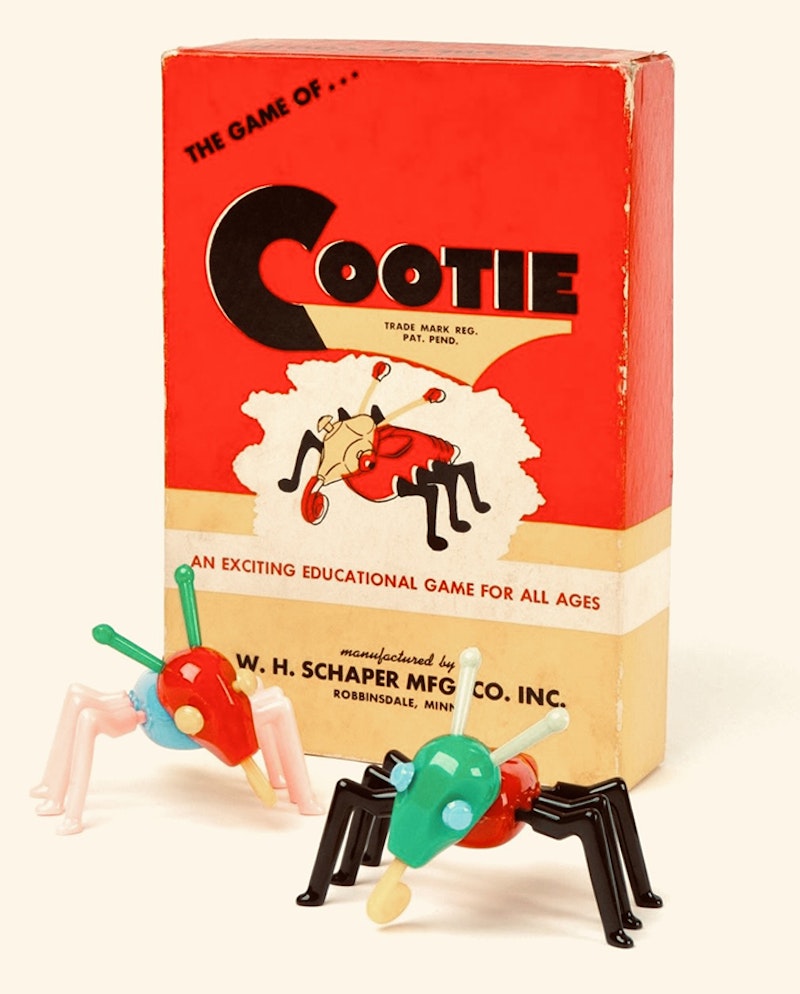My first job after teething involved crawling around on my hands and knees with a magnet during workdays in downtown Baltimore. I collected pins and needles stuck between oak floorboards on the top floor of an old townhouse on Calvert St. Seamstresses sewed draperies on large tables between bolts of fabric and textiles stacked floor to ceiling. The industrial-sized curtains were for use in churches, schools, and auditoriums. I stuck the loose floor pins into those fabric tomatoes we know so well. One occupational hazard was splinters.
An original Baltimore product known for generations was available at Reads drugstores. Founded in 1858, Dr. Gordshells’s Skin Cream helped save my fingers and hands. After the sweatshop, the ointment made splinters rise to the skin’s surface overnight, ready to be extracted the next morning with tweezers. The salve was recommended for many old-time afflictions—many I’d never heard of before like Chilblains and Scald-heads—plus common boils, pimples and bug bites. The medication worked.
Read’s, a Baltimore-based drugstore chain named after William Read, was sold to the Nattans family in 1899. Their 1929 ad slogan was “Run Right to Reads.” In 1955, the drugstore gained national attention when protesters took over their flagship downtown location for the first civil rights sit-in staged by Morgan State College students. Reads still enforced a strict segregation policy at its lunch counters. The owner Arthur Nattans Sr. stated in January 1955, “We will serve all customers throughout our entire stores, including the fountains, and this becomes effective immediately.” The drugstores were eventually sold to Rite-Aid in 1983.
Read’s locations throughout the city had the same basic layouts. Pharmacies were located in the rear with a separated, long soda fountain section by the entrance, next to a TV tube replacement kiosk. Need smokes ? The taste of Kent and every other brand of cigarettes and tobacco provisions were available. Off to the side, my favorite hang-out spot, the magazine aisle. The essential information hub displayed a wide spectrum of pulp magazine titles. A magic-markered, scotch-taped 3x5” sign read: “ Ask for Playboy behind counter.” I’m sure they didn’t mean the pharmacist.
Imagine the noise sounds that depict respiratory infections: wheezing, sneezing, and whooping. Children always had nasty colds. Some basic “do’s and dont’s” were ingrained in our memory. Don’t eat boogers. Don’t use your sleeve, wipe with Kleenex. If you cough or sneeze, do cover your mouth—all helpful, if not obvious. For my kid colds, I was sent running to Read’s to buy Browne’s Mixture cough syrup with its awful, strong licorice aftertaste. It was common knowledge the cough medicine was the tears of poppies. Like laudanum, the opiate content was why it worked. Kids could buy Browne’s into the 1960s until it was banned. I do recall being quiet afterwards.
Plenty of childhood dangers sound the “ick” alarm. Itchy-scratchy things such as cooties, scabies, and head lice were ever-present. Which one’s not real? Cooties. Sorta. Back in the 19th century, the slang term referred to the lice found in World War I trenches. There’s also a well-known tag game played by boys and girls where they shared cooties by touching and giving it another person.
In 1948, William H. Schaper, a Minnesota popcorn machine manufacturer, whittled a fishing lure that looked like a bug that eventually become a toy. The entertaining board game was a rite of passage. “Now every girl and every boy Thinks me cute enough to hug. I've filled them all with sheerest joy—I’m the “Friendly Cootie Bug”!”
Cooties became a timeless symbol of many childhoods. Two to four players rolled dice to build their own unique, plastic bug. Be the first to assemble one and you win! As a result of our escapades, laughter made our insect-making sessions memorable.
Nowadays, the only buzz I get is hitting a button at my local pharmacy to call an employee with a key. The NyQuil’s located behind a locked plastic wall. I don’t enjoy over-the-counter cold remedies. Like a lost Jiminy Cricket, I roam the drugstore aisles, perplexed as to why certain items are locked up and others aren’t. In the meantime, a summertime cold is annoying. I just had one; there isn’t a quick fix. Following Covid, older people tend to be a bit nervous with unhinged feelings related to sniffles and sneezes. I’m not qualified to offer any medical advice. Health professionals advise “See a doctor if you don’t feel better in 10 days.”

